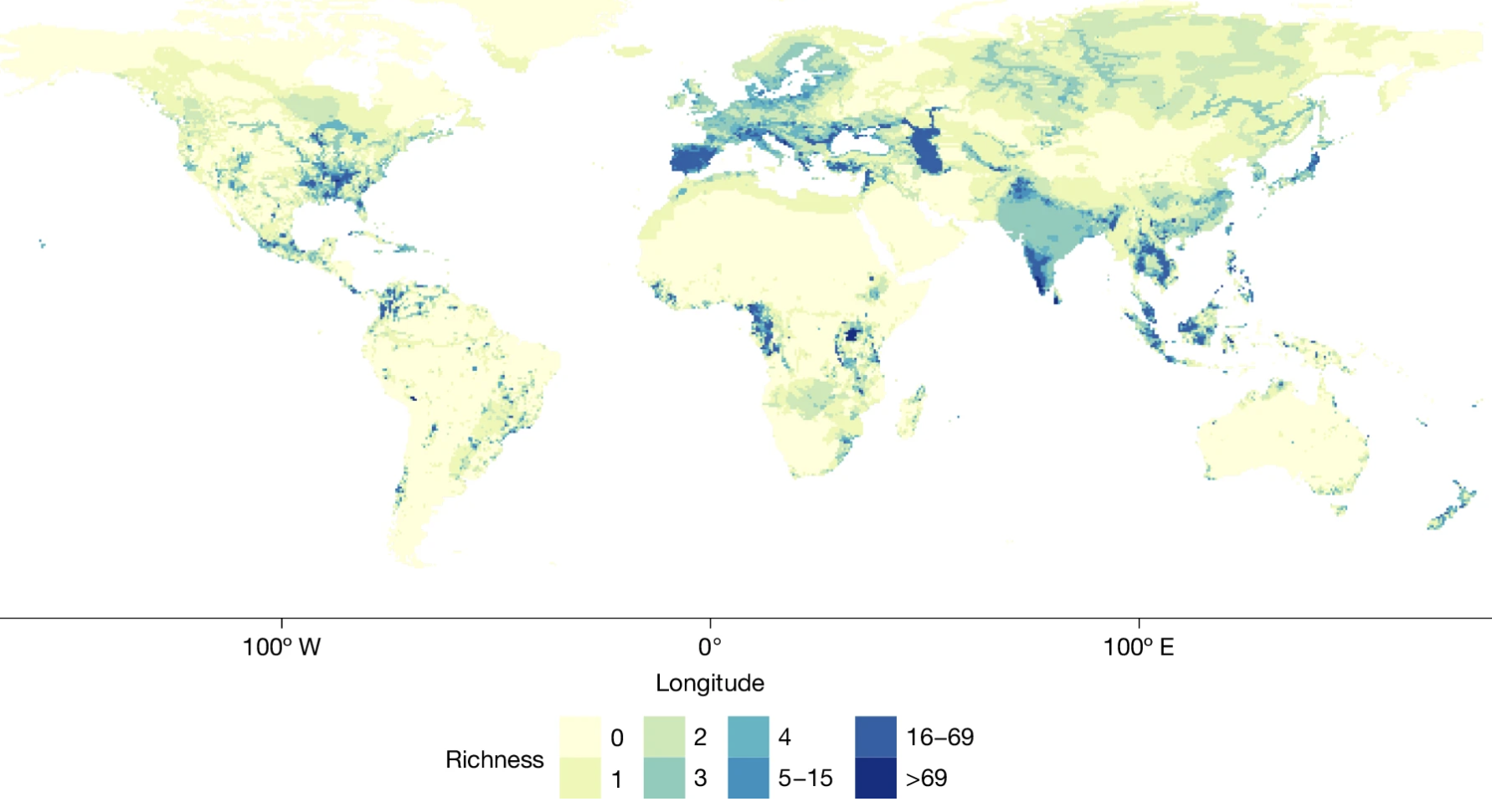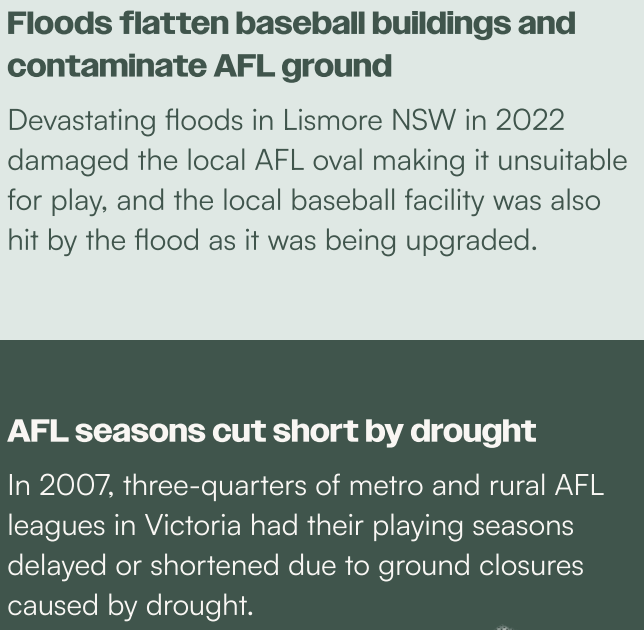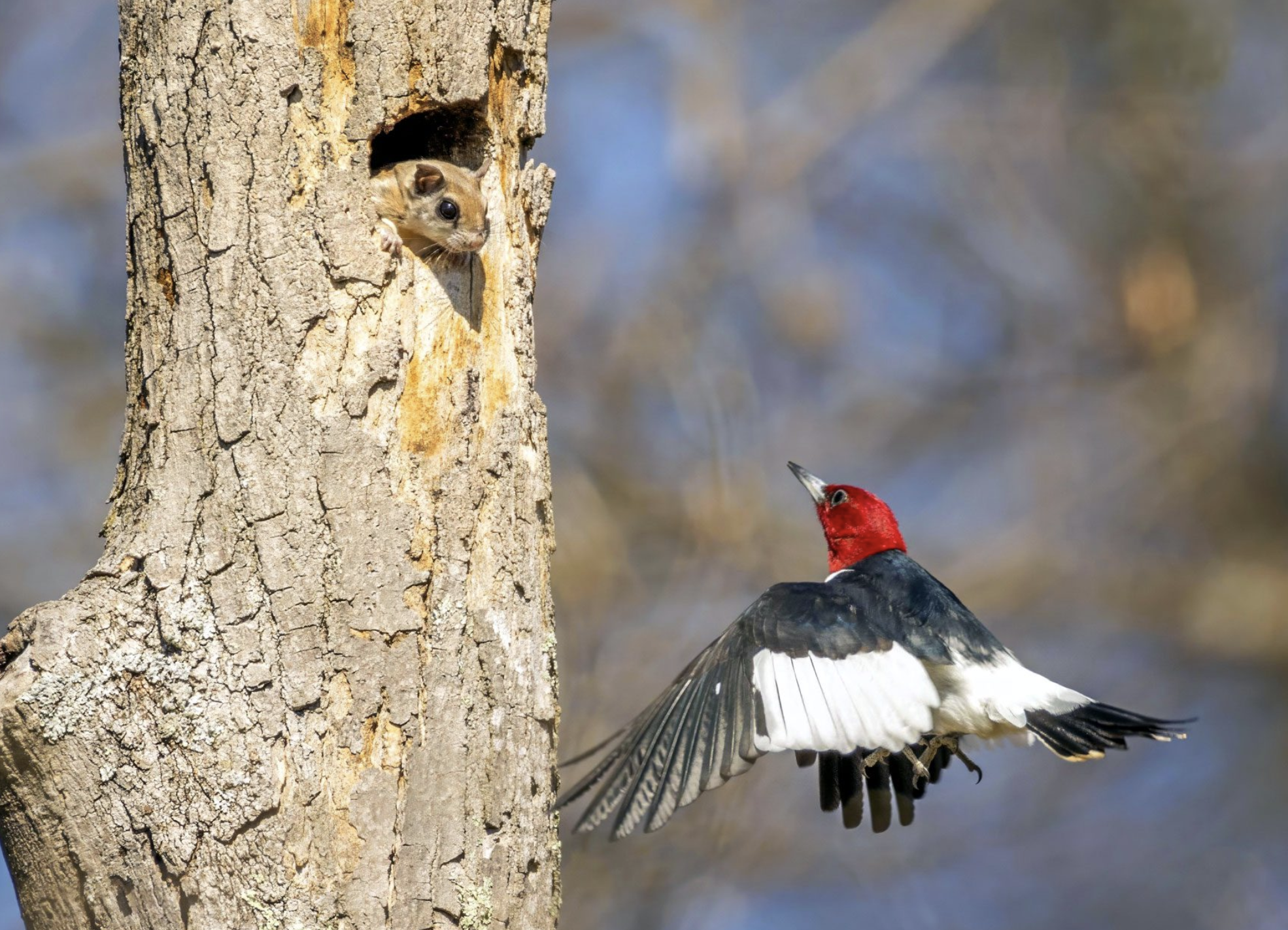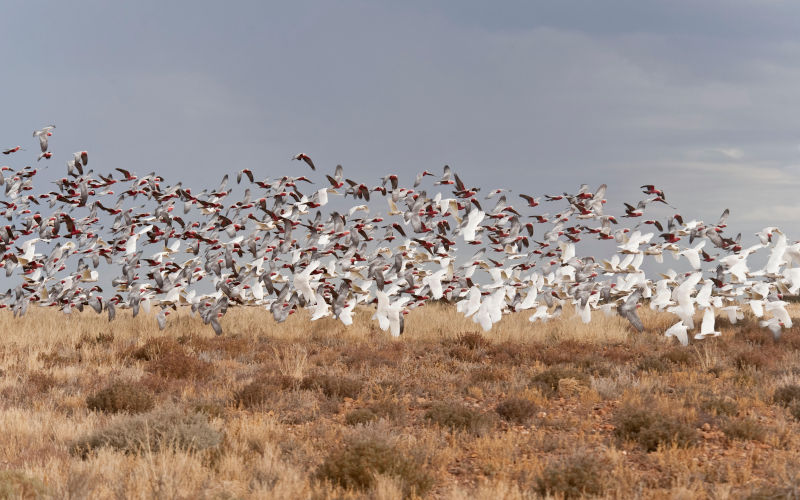Environment: Freshwater systems and grasslands, forgotten nature and climate heroes
June 1, 2025
Human activities are pushing many freshwater fish toward extinction globally and in Australia.
The world’s grasslands contain enormous biodiversity, support more than a billion people and mitigate climate change, but are disappearing. Can holistic conservation restore complex ecosystems?
Quarter of freshwater fauna facing extinction
Freshwater covers less than 1% of the world’s surface but supports more than 10% of all known species, including more than a third of all vertebrates and half of all fish. Unfortunately, a quarter of species of freshwater fish, crustaceans and dragon/damselflies are facing extinction and 90 species have already disappeared.
While most areas of the world that are neither desert nor ice contain some threatened freshwater fauna, particular hotspots occur in eastern US, central America, Europe, India, southeast Asia and parts of central Africa. Lakes Victoria and Titicaca have the greatest numbers of threatened species. Unfortunately, large areas of New Zealand and coastal Australia are also affected.

The greatest threats to freshwater fauna are industrial and agricultural pollution, dams blocking water flows and migration routes, water extraction, invasive species and over harvesting. Climate change is an increasing threat. It raises the temperature of fresh water and causes floods and fires which increase sediment flow and change the chemical composition of the water.
Within Australia, where freshwater species have been declining since European settlement, the Biodiversity Council has reported that 37% of native freshwater fish are threatened with extinction, at least 20 of which are more likely than not to become extinct in the next 20 years without major efforts to conserve them.
Unfortunately, even the limited funds directed to freshwater fish conservation are poorly directed. For example, the major threat in Australia comes from invasive species and yet control programs are in place to protect only 21% of the native fish threatened by invasives. Dams, changed water flows, climate change and severe weather are also serious problems. However, the most common conservation actions are monitoring, planning and education rather than urgently needed action to prevent threats and extinctions and remediate damaged waterways. If the recent Maugean skate disaster is any indication of future government action, I think it’s safe to assume that most of the threatened fish will become extinct.
The Biodiversity Council stresses the urgency of assessing the conservation status under the EPBC Act of many listed and newly identified threatened species, tackling invasive species, improving water flows, halting habitat degradation and loss, and establishing refugia for threatened species which live in small and/or highly vulnerable locations.
… but new species also being discovered and rediscovered
At the other end of the taxonomic tally, more than 200 new species of freshwater fish have been discovered worldwide each year for the last four years – more than 900 in total. South America and Asia have together contributed 85% of the new species. Most new discoveries live in lakes, pools, rivers and streams but Ophisternon berlini, a blind eel, lives in muddy soil in Costa Rica and members of the newly discovered Karstsinnectes genus live in pools in caves in China. Of course, just because they are newly described by “Western” science doesn’t mean that indigenous peoples didn’t know about them or that many of them are not also threatened with extinction.
In a bit of good news, obituaries for the Chel snakehead will have to be withdrawn after specimens were found on the banks of the Chel river in West Bengal last year. The last sighting of a live Chel was in 1933 and it was presumed to have become extinct.
Grasslands, the world’s forgotten heroes
Grasslands such as the Great Plains, Pampas, Steppes, savannas, tundra and vast areas of central and northern Australia don’t seem to receive the same public attention as forests or coral reefs, and yet they provide critical habitat for a wide range of animals and plants. They also provide livelihoods, food and essential “ecosystem services” such as pollination and water filtration for more than a billion people, including many indigenous communities with deep cultural links to the land. Despite this, almost a half of grasslands have been converted to agriculture or settlements and they are among the most at-risk biomes.
Grasslands also have an important role in mitigating climate change as they hold a third of all the world’s stores of terrestrial carbon, most of it underground. Almost as much as forests (figure below).

To help develop awareness of the importance of, and enormous threats to, grasslands and stimulate research and action to protect them, 2026 is the UN International Year of Rangelands and Pastoralists.
The whole land sector, comprising all the world’s vegetation and soils, absorbs about a third of humanity’s emissions of CO2, emissions that would otherwise be in the atmosphere causing even more global warming. Governments have been using, or rather misusing, this to “offset” emissions and avoid making the urgent cuts needed to actual emissions. Several factors contribute to the misuse:
- The measurement of the amount of CO2 absorbed in any particular area of land is extremely unreliable and open to abuse, particularly overestimation. When offsets are tradable, there’s a host of dodgy practices involved;
- It seems likely that the land’s ability to absorb CO2 is gradually declining as a result of global warming; and
- Unlike the carbon in fossil fuels which, left undisturbed by humans, would remain locked deep underground for millennia, the carbon stored in the land is constantly vulnerable to being released back into the atmosphere as a result of, for instance, bushfires, droughts, pests and land clearing for agriculture, mining, logging and urban development.
As with the underestimation of anthropogenic methane emissions and the emissions from thawing permafrost, the overestimation of CO2 absorbed by soil and vegetation is leading to an underestimation of the magnitude of our climate change problem and the gap between what’s needed and what’s being done.
Safe sport during weather extremes

Heatwaves, droughts, floods and bushfires are all consequences of climate change and all are potential causes of illness and injury during professional and community sporting activities. The Environmental Defenders Office has released a four-step guide for club members and local sports clubs to help them avoid the harmful effects (and associated legal risks) of extreme weather events during sporting activities:
- Find out if your club is prepared for extreme weather;
- Develop policies to keep players and spectators safe;

- Consult online and other resources to help create policies;
- Ensure that the club, event organisers, referees and officials understand their responsibilities and the legal risks.
Environmentally sustainable exercise clothes
I know that many P&I readers are fitness fanatics and environmentalists, so I imagine that you worry about the environmental footprint of your exercise togs.
I know that you wouldn’t wear anything synthetic because it’s been made from petroleum-based fibres and at least some of it will end up in landfill or the oceans. And I’m confident you also worry about the amount of water and pesticides used to grow cotton, the methane and nitrous oxide emissions of sheep and the pollution produced from processing bamboo. So, big dilemma, what should you wear while sweating and panting?
Unfortunately, there are no easy answers: ‘If you’re hoping for a blanket answer about which materials are good or bad, Dr Leonas [a professor of textile sciences] said, it’s not that simple. “ I can be the devil’s advocate on any fibre,” she said. “There are trade-offs with all of it.”’
But there are some tips for ethical choices that might relieve your conscience:
- Choose clothes that use recycled fibres;
- Stick to brands that you trust for their environmental footprint and the quality (seams are important) and longevity of their products (doubling the life of a pair of shorts halves the environmental footprint). Even better if they also offer a recycling program for their clothing;
- Choose colours and styles that you’re going to be happy with for more than one season; and
- Take good care of your exercise clothes. Letting them dry in the open air reduces the greenhouse gas emissions and extends their life.
Can holistic conservation reproduce ecosystem complexity?
Almost 20% of bird species nest or roost in tree cavities that either pre-existed or that they excavated. But as humans know only too well, once you’ve made a home, it’s impossible to keep it to yourself and the cavities produced by woodpeckers also provide homes for mammals, reptiles, insects and other birds. (Australia doesn’t have any woodpeckers, by the way.)

The diagram above of a "woodpecker nest web" illustrates the relationships between woodpeckers and some of the many other species that use their cavities (more details about the concept and the diagram are in the link).
The diagram also demonstrates the absolute stupidity of the whole idea of trading off one ecosystem for another. And the enormous difficulty of rebuilding an ecosystem that has been degraded or destroyed. How can one ever recreate the complexity illustrated above? And this diagram shows only a few of the many thousands of species found in most areas.
Doubts aside for a moment, holistic conservation stresses the importance of identifying and preserving as many of the dynamic inter-species relationships as possible when ecosystems are damaged, including relationships with parasites. Planting a few trees, even local natives, and calling it paradise is not ecosystem restoration.

A Red-headed Woodpecker finds a tree cavity claimed by a flying squirrel_. Photo by_ Bob Rumer/Birdshare.
The views expressed in this article may or may not reflect those of Pearls and Irritations.

